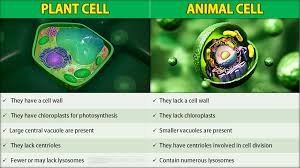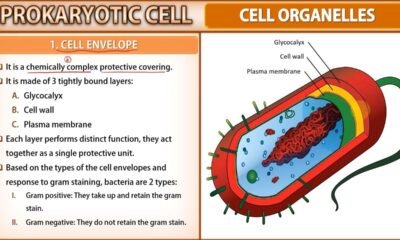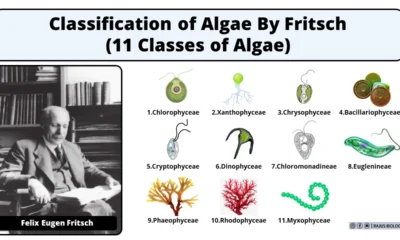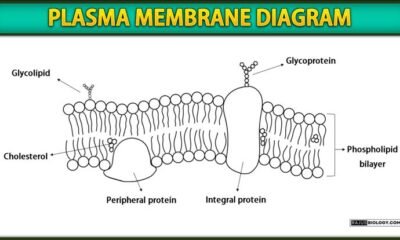Blog
Difference Between Cell Wall and Cell Membrane

In this article we will discuss about difference between cell wall and cell membrane
Difference Between Cell Wall and Cell Membrane
1. Structural Function: The cell wall provides rigidity, strength, and protection to the cell, maintaining its shape and preventing it from bursting under osmotic pressure. In contrast, the cell membrane primarily functions as a selective barrier, controlling the movement of substances in and out of the cell.
2. Presence of Organelles: The cell wall is external to the cell membrane and is not associated with organelles. It is a distinct structure found in specific cell types. On the other hand, the cell membrane is found within the cell and surrounds organelles, providing a boundary to their internal compartments.
3. Flexibility: The cell wall is rigid and inflexible, offering structural support to the cell. It does not change shape or size easily. In contrast, the cell membrane is flexible and dynamic, allowing the cell to undergo shape changes and accommodate various cellular processes.
4. Composition Variations: The cell wall composition varies among different organisms. In plants, the cell wall is primarily composed of cellulose, while in bacteria, it contains peptidoglycan. In fungi, the cell wall can consist of chitin. The cell membrane, however, has a consistent lipid bilayer structure composed of phospholipids in all cells.
5. Cell-to-Cell Connections: The cell wall plays a crucial role in cell-to-cell adhesion and communication. In plants, plasmodesmata are channels present in the cell wall that allow the exchange of materials between adjacent cells. In contrast, the cell membrane is involved in intercellular communication through specialized proteins and receptors.
6. Protection against Pathogens: The cell wall provides an additional layer of defense against pathogens, as it is often thicker and more resistant to degradation than the cell membrane. It acts as a physical barrier and also contains antimicrobial compounds. The cell membrane, while involved in immune responses, relies more on receptors and signaling pathways to detect and respond to pathogens.
7. Energy Storage: The cell wall does not have a role in energy storage. However, the cell membrane can contain specialized structures, such as lipid droplets, which serve as sites for storing energy-rich molecules like triglycerides.
8. Sensitivity to Osmotic Pressure: The cell wall helps maintain turgor pressure in plant cells, allowing them to withstand changes in osmotic pressure. It provides structural support and prevents cell shrinkage. The cell membrane is involved in osmoregulation, controlling the movement of water and solutes across the membrane to maintain cellular homeostasis.
9. Role in Cell Expansion: The cell wall is responsible for cell expansion and growth in plants. It can undergo controlled stretching and modification during cell growth. The cell membrane, while it does play a role in cell growth, is not directly involved in cell expansion.
10. Role in Cell Recognition: The cell wall contains specific molecules, such as glycoproteins and glycolipids, that participate in cell recognition and cell-to-cell interactions. These molecules are important for processes like tissue development, immune responses, and fertilization. The cell membrane also plays a role in cell recognition, with proteins and carbohydrates on its surface facilitating interactions with other cells and molecules.
Summary: Difference Between Cell Wall and Cell Membrane
- The cell wall provides structural support and protection, while the cell membrane acts as a selective barrier.
- The cell wall is external to the cell membrane and is not associated with organelles.
- The cell wall is rigid, while the cell membrane is flexible and dynamic.
- The composition of the cell wall varies among organisms, while the cell membrane has a consistent lipid bilayer structure.
- The cell wall facilitates cell-to-cell connections, while the cell membrane is involved in intercellular communication.
- The cell wall offers additional protection against pathogens, whereas the cell membrane relies more on receptors and signaling pathways.
- The cell wall does not store energy, but the cell membrane can contain lipid droplets for energy storage.
- The cell wall helps maintain turgor pressure, while the cell membrane is involved in osmoregulation.
- The cell wall is responsible for cell expansion in plants, while the cell membrane has a secondary role.
- Both the cell wall and cell membrane participate in cell recognition, but the molecules involved differ.

 Blog7 months ago
Blog7 months ago[PPT] Human Reproduction Class 12 Notes
- Blog7 months ago
Contribution of Indian Phycologists (4 Famous Algologist)
- Blog7 months ago
PG TRB Botany Study Material PDF Free Download

 Blog7 months ago
Blog7 months agoCell The Unit of Life Complete Notes | Class 11 & NEET Free Notes

 Blog7 months ago
Blog7 months ago[PPT] The living world Class 11 Notes

 Blog7 months ago
Blog7 months agoClassification of Algae By Fritsch (11 Classes of Algae)

 Blog7 months ago
Blog7 months agoJulus General Characteristics | Free Biology Notes

 Blog7 months ago
Blog7 months agoPlasma Membrane Structure and Functions | Free Biology Notes














